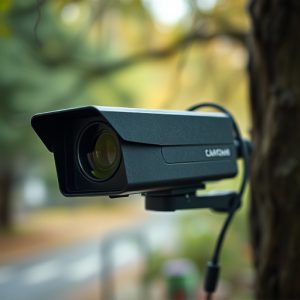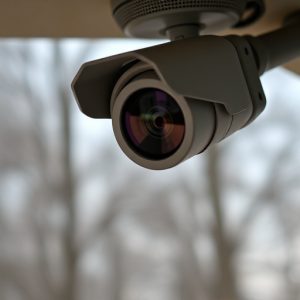Revolutionizing Spy Camera Detection: AI Integration in RF Detectors
RF detectors enhanced by Spy Camera Artificial Intelligence Integration revolutionize hidden camera…….
RF detectors enhanced by Spy Camera Artificial Intelligence Integration revolutionize hidden camera detection. AI algorithms analyze radio frequency signals, identifying unique patterns of covert surveillance equipment with high accuracy. This technology learns from extensive datasets, adapts to new camera technologies, and provides proactive security solutions in homes, businesses, and high-risk environments. The four-step process involves data collection, model training, real-time analysis, and continuous learning to ensure effective protection against evolving spy camera technologies.
Uncover the world of hidden cameras with our comprehensive guide on RF detector sweeps enhanced by artificial intelligence (AI) integration. Explore how this technology revolutionizes spy camera detection, from understanding RF detector technology and its crucial role in identifying covert surveillance devices to the emergence of AI as a game-changer.
We provide a step-by-step guide to integrating AI for efficient sweep processes, along with practical applications and future trends shaping the landscape of RF detector sweeps using AI integration.
- Understanding RF Detector Technology and Its Role in Spy Camera Detection
- The Emergence of Artificial Intelligence in Hidden Camera Identification
- Step-by-Step Guide: Integrating AI for Efficient Spy Camera Sweep
- Practical Applications and Future Trends in RF Detector Sweep Using AI
Understanding RF Detector Technology and Its Role in Spy Camera Detection
RF (Radio Frequency) detector technology plays a pivotal role in the detection and identification of hidden spy cameras, especially as artificial intelligence (AI) integration enhances their capabilities. These devices operate by scanning radio frequencies to pick up signals emitted by covert surveillance equipment. Modern RF detectors have evolved to incorporate AI algorithms that enable them to analyze signal patterns and differentiate between legitimate electronic devices and potential hidden cameras.
By learning from extensive datasets, AI-integrated RF detectors can recognize unique signatures of spy cameras, making them highly effective in various environments, from homes to businesses. This technology offers a proactive approach to security by allowing users to identify and neutralize hidden threats before sensitive information is compromised.
The Emergence of Artificial Intelligence in Hidden Camera Identification
The integration of Artificial Intelligence (AI) in hidden camera detection has emerged as a game-changer in enhancing security measures. With advancements in technology, Spy Camera Artificial Intelligence Integration now plays a pivotal role in identifying and neutralizing these covert devices. AI algorithms are designed to analyze vast amounts of data from surveillance footage, enabling efficient pattern recognition and anomaly detection.
Through machine learning techniques, these systems can detect subtle variations in images and videos, recognizing the unique characteristics of hidden cameras. This technology goes beyond traditional methods by offering a more sophisticated and adaptive approach. By continuously learning and evolving, AI-powered detectors can keep up with emerging camera technologies, ensuring effective protection in today’s digital era.
Step-by-Step Guide: Integrating AI for Efficient Spy Camera Sweep
Integrating Spy Camera Artificial Intelligence (AI) into your RF detector sweep process can significantly enhance efficiency and accuracy. Here’s a step-by-step guide to help you leverage AI for a more effective hidden camera detection experience:
1. Data Collection: Begin by gathering extensive data using your RF detector, identifying known frequencies associated with spy cameras. This foundational step ensures the AI model has relevant information to learn from.
2. Model Training: Utilise machine learning algorithms to train an AI model on the collected data. The model learns to distinguish between regular RF signals and those emanating from hidden cameras. Fine-tuning this model through rigorous testing is key to its effectiveness.
3. Real-time Analysis: Once trained, integrate the AI model into your sweep system. As you detect RF signals during a sweep, the AI analyzes them instantly, flagging any anomalies indicative of spy cameras with high precision. This real-time capability allows for swift action.
4. Continuous Learning: Spy camera technology evolves, so it’s crucial for your AI to adapt. Regularly update the model with new data and feedback from field operations to improve its performance over time.
Practical Applications and Future Trends in RF Detector Sweep Using AI
The integration of Spy Camera Artificial Intelligence (AI) in RF detector sweep technology opens up a world of practical applications, revolutionizing the way we detect and counteract hidden surveillance devices. AI algorithms can analyze vast amounts of radio frequency data, enabling faster and more accurate identification of hidden cameras that might be capturing sensitive information. This is particularly useful in high-security areas like government facilities, financial institutions, and private residences where advanced security measures are essential.
Looking ahead, the future trends in this field suggest even smarter and more adaptive systems. AI-powered RF detectors can learn and adapt to new technologies used by spy cameras, ensuring they remain one step ahead. The continuous evolution of machine learning models will lead to improved accuracy and efficiency, making it harder for hidden surveillance devices to go unnoticed. This integration of Spy Camera AI in security protocols is a game-changer, setting the stage for enhanced privacy protection in an increasingly digital world.
The integration of Spy Camera Artificial Intelligence (AI) integration into RF detector sweeps represents a significant advancement in hidden camera detection. By leveraging AI, these systems can analyze vast amounts of data from radio frequency signals, enabling more accurate and efficient identification of spy cameras. This tutorial has outlined the key steps for integrating AI into RF detector processes, from understanding the technology to practical applications. As we look towards the future, AI-driven RF sweeps are poised to revolutionize surveillance techniques, enhancing privacy protection in both public and private spaces.


